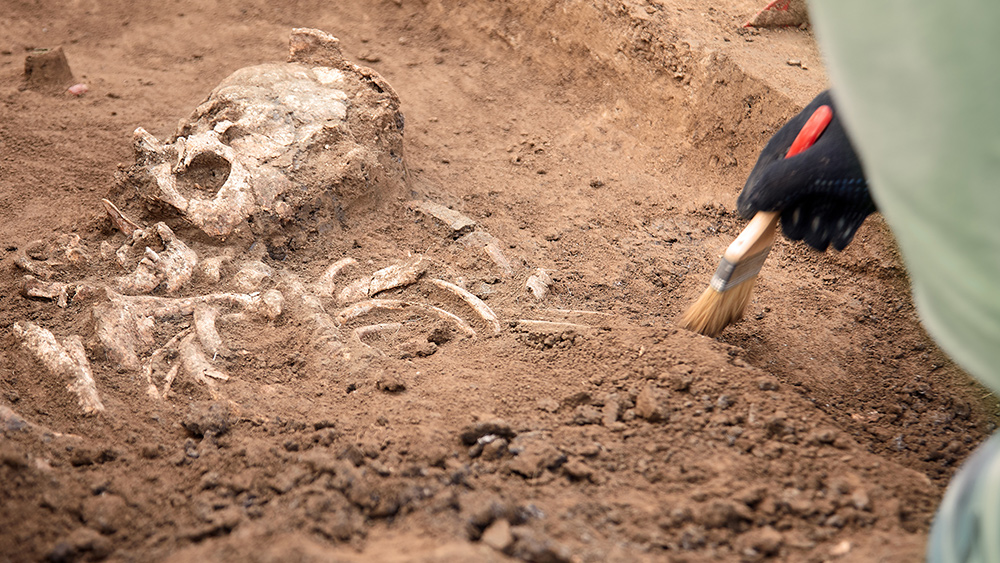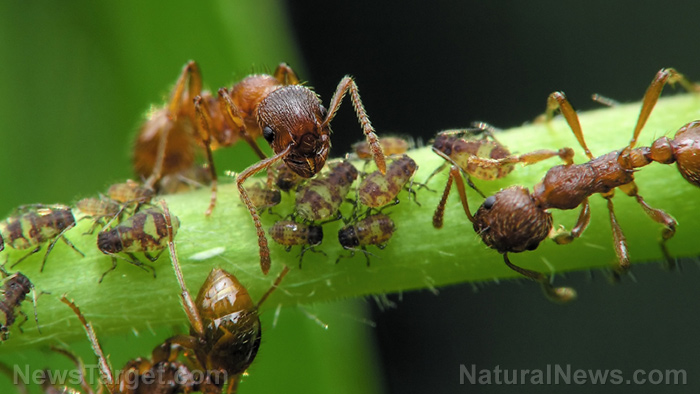Archaeologists discover RARE and possibly the OLDEST gold-covered Egyptian mummy
02/03/2023 / By Kevin Hughes

Archaeologists in Egypt have discovered what could possibly be the oldest gold-coverered Egyptian mummy.
The said mummy, who was named Hekashepes per the hieroglyphic inscriptions on his sarcophagus, was found among a whole set of tombs going back around 4,300 years ago. Hekashepes’ huge rectangular sarcophagus made of limestone was still sealed with mortar when the team of archaeologists discovered it.
Team director Zahi Hawass said in a statement that Hekashepes’ mummy was at the bottom of a 49-foot-shaft near the Step Pyramid at Saqqara. His group had been working to reveal a cemetery of Egyptian tombs from the fifth and sixth dynasties.
“When the sarcophagus was examined, it was found to be completely sealed with mortar just as the ancient Egyptians had left it 4,300 years ago,” said Hawass, a former antiquities minister who served twice in the position. “When the lid was raised, we found the mummy of a man covered with gold leaf.”
He later clarified in an email to Live Science that while Hekashepes is the older gold-covered mummy they found, there are many more mummies older than him. “This mummy is the oldest complete mummy covered in gold,” he wrote. While little information about Hekashepes is available, he was mummified using artifical methods and appeared to be wealthy based on the fact that he was covered in gold leaf upon death.
Francesco Tiradritti, Egyptology professor at Kore University of Enna in Italy, said Hekashepes was clothed and buried without bandages, based on the images posted online. The mummy appeared to be wearing a tunic with a belt and a huge necklace at the time of burial. Tiradritti, who is not involved in the diggings, said this may be an attempt “to preserve as much as the living appearance of the deceased.”
Hekashepes’ fellow mummies also identified
The archaeologists also identified several other figures buried with Hekashepes in the same necropolis.
One such tomb belonged to a man named Khnumdjedef, who served as an “inspector of the officials” during his lifetime. Khnumdjedef served the Pharaoh Unas who ruled from about 2353 B.C. to 2323 B.C., based on hieroglyphic inscriptions in his tomb.
Another tomb belonged to an official named Meri. According to inscriptions, the said official held a lot of titles in life, including “keeper of the secrets” and “assistant of the great leader of the palace.”
A third tomb, meanwhile, belonged to the priest Messi and his wife. The said tomb held nine statues, with seven of them representing servants and the other two representing Messi and his spouse.
A fourth tomb was also discovered at the end of a shaft 33 feet deep. The said tomb held a stone sarcophagus purportedly belonging to a man named Fetek, who was buried along with three stone statues depicting him together with an offering table.
According to archaeologists, Khnumdjedef’s tomb was also decorated with wall paintings depicting “scenes of daily life” and a painting of five jars lined up on top of what looks like a table. (Related: Ancient secrets to fantastic hair: Scientists uncovered 3000 year old hair wax from the hair of Ancient Egyptian noblewomen.)
Referencing a published photo of the tomb, Tiradritti remarked that some of the paintings at Khnumdjedef’s resting place were drawn with “elongated proportions.” He added that these became popular long after the inspector lived.
Ultimately, the Italian professor concluded that “it looks like the Egyptian mission found a necropolis that can be related to the pyramid of [Unas] and his cult.”
Follow Discoveries.news for more stories about ancient Egypt.
Watch this video about a 4,300-year-old-mummy inside of a Pharaonic tomb.
This video is from the High Hopes channel on Brighteon.com.
More related stories:
Ancient Egyptian tomb reveals GRUESOME murals of cows being slaughtered.
Sources include:
Submit a correction >>
Tagged Under:
Ancient Egypt, ancient history, artifacts, breakthrough, discoveries, Egypt, gold-covered mummies, Hekashepes, hieroglyphics, Khnumdjedef, mummies, necropolis, Saqqara, Step Pyramid, wall paintings, Zahi Hawass
This article may contain statements that reflect the opinion of the author
RECENT NEWS & ARTICLES
COPYRIGHT © 2017 RESEARCH NEWS




















